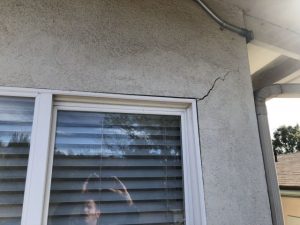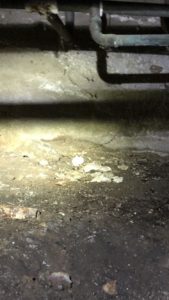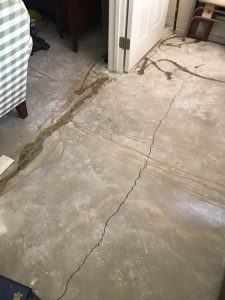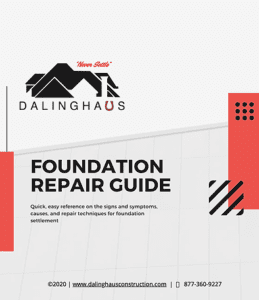Top 3 Signs Your Foundation May Be Settling
We are often asked… “What are some of the signs we homeowners can look for to determine if our foundation may be settling?” We discuss conditions that lead to foundation setting and have compiled the top 3 signs a foundation may settle and the possible reasons. There are more signs of course, we concentrated on the top 3 most common.
#1. Diagonal Cracks Around Doorways Or Windows
When a home begins to settle, think of looking at it like a hinge. When a home settles there is a hinge effect somewhere else in the home. There has to be some point where the home moves to release pressure. When a home racks, the windows and doors are the weakest point. That’s why you see cracks at these points. How much is it moving? We don’t know until we collect more data to prove where the movement is and how much.

#2. Soil Pulling Away From Concrete
Another factor to your foundation settling is your soil content. Here in Southern California we see a multitude of soil conditions. The most predominant is clay in the soil. Clay acts as a sponge when water is present and swells up. During the rainy season you will notice soil expand. Once the dry season comes around, you will notice the soil shrink and in some cases crack. When the soil shrinks, it causes the soil to compress. This compression or shrinkage of the soil is the 2nd tell tale sign of settling. It is most notable when soil pulls away from the concrete footings. As shown below.

#3. Concrete Slab Cracks
Slab on grade construction is when a home is built on a concrete slab and does not have a crawlspace. The most common sign a foundation may be settling is when cracks develop in the footing and/or slab floor. As mentioned above, when there is settling in one area of the home there has to be a hinge point for the slab to move. Typically, you will see a crack and one side will be higher than the other side. This is because soil has settled or eroded and caused one area to settle and the other area to lift. As pictured below.

These are just 3 of the top signs your foundation may be settling as conveyed by thousands of inspections and plan of corrections approved and completed.






